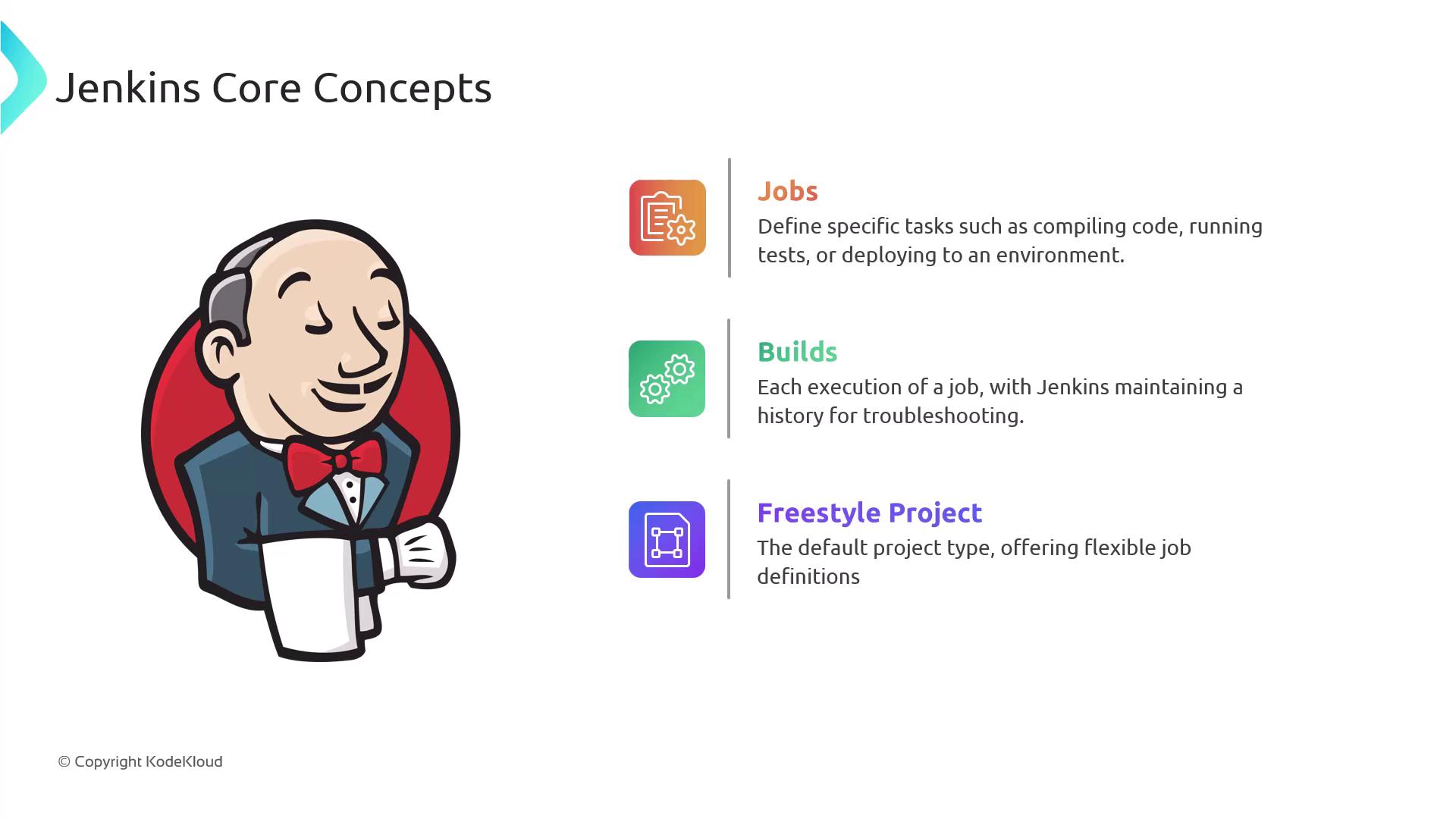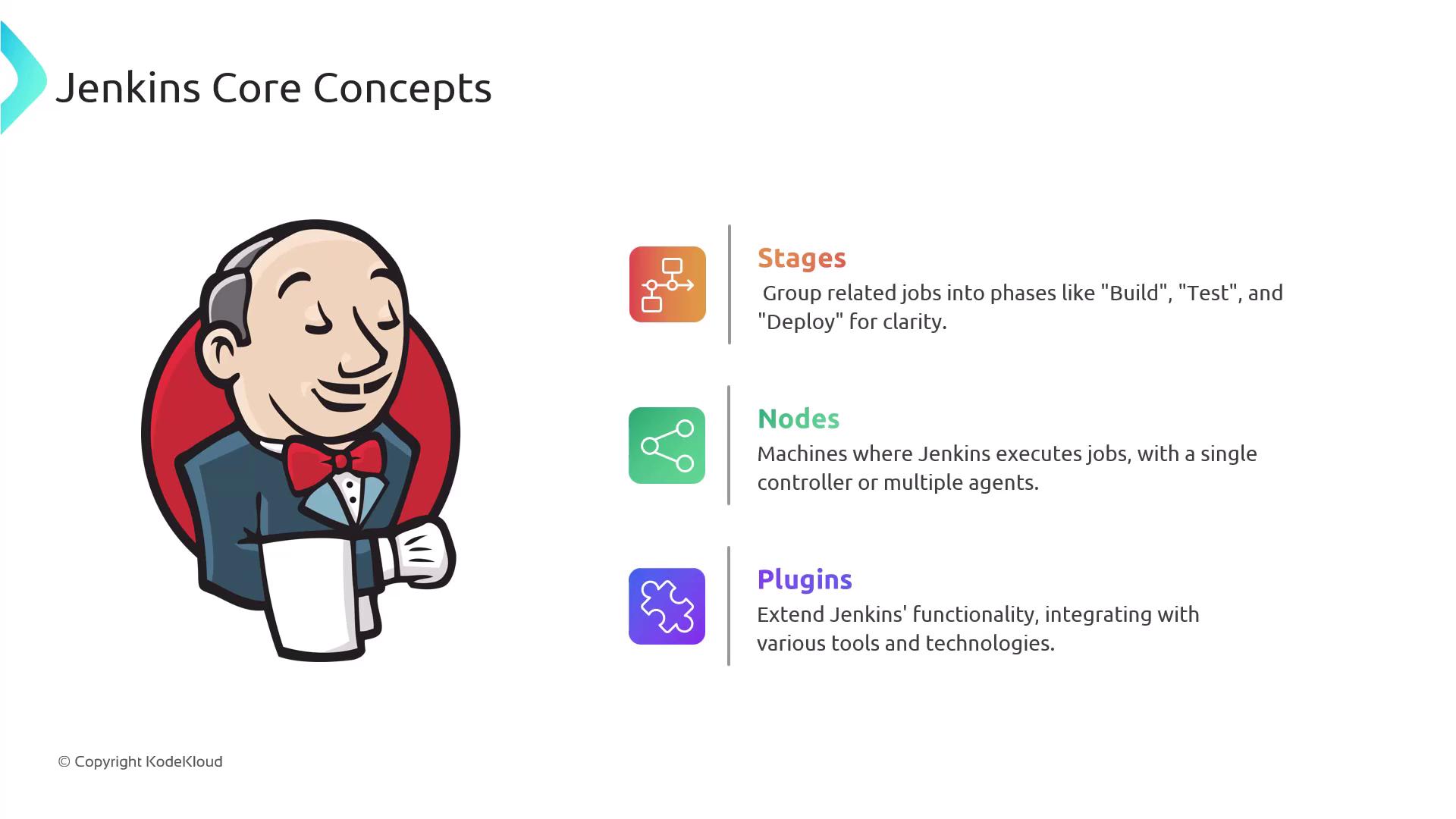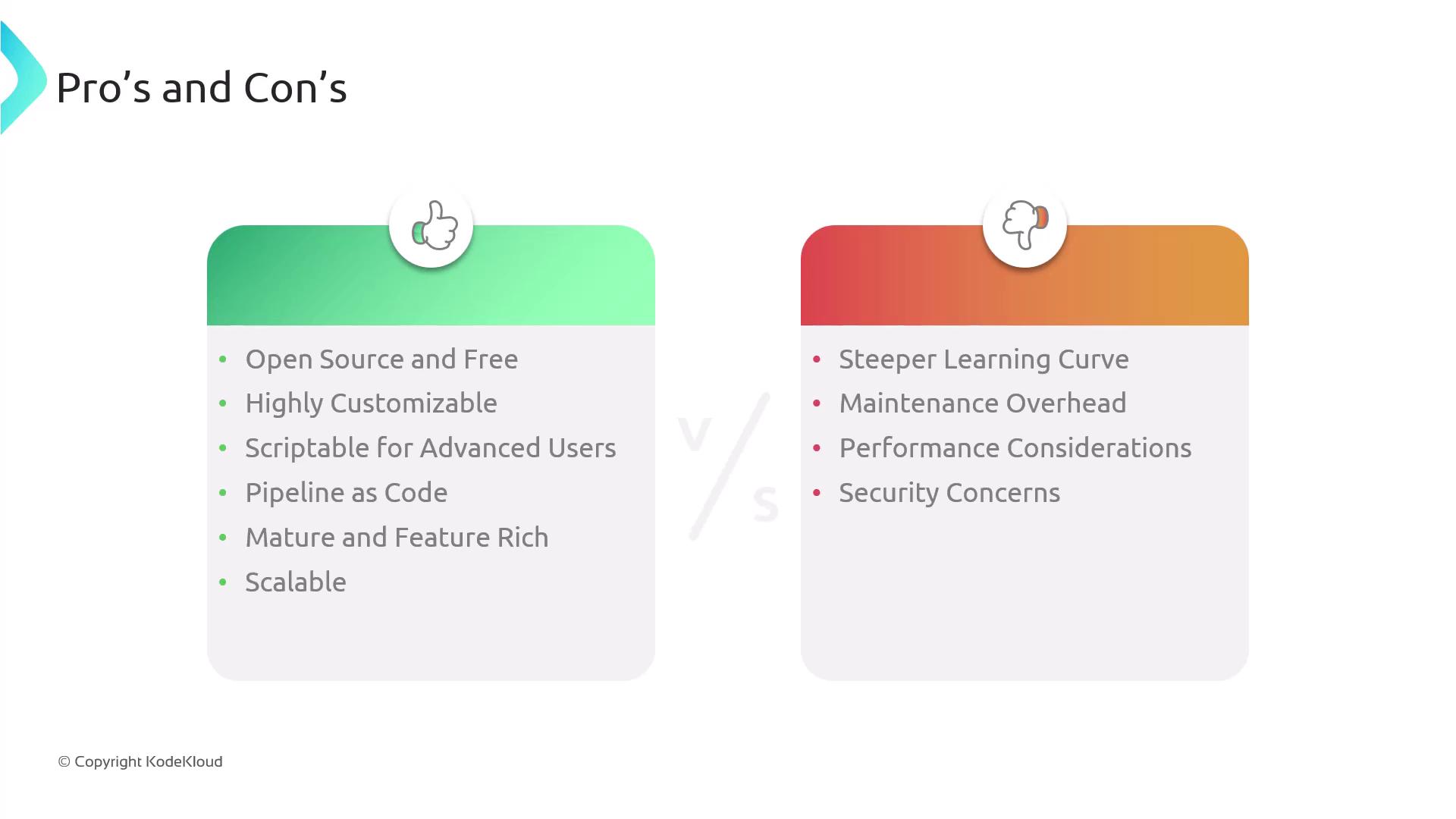Certified Jenkins Engineer
Introduction and Basics
Introduction to Jenkins
Jenkins is an open-source automation server that powers continuous integration and delivery (CI/CD). It automates your software pipeline—from building and testing to deploying applications—every time you push code. By integrating with popular tools like Git, Docker, and Kubernetes, Jenkins helps teams deliver high-quality software faster and with fewer manual steps.
Note
Jenkins supports over 1,800 plugins, making it easy to connect with version control systems, build tools, testing frameworks, and cloud providers.
How Jenkins Works
- Trigger
A developer pushes code changes to a Git repository (e.g., GitHub, GitLab, Bitbucket). - Detection
Jenkins polls the repository or listens for webhooks. - Checkout & Build
The server clones the latest code, compiles it, and runs unit tests. - Test & Report
If tests fail, Jenkins notifies the team via email, Slack, or other channels. - Deploy
On success, Jenkins can package the artifact into a Docker image and deploy it to a Kubernetes cluster or EC2 instance. - Feedback
Build and deployment statuses are displayed in the Jenkins UI and communicated back to the team.
 and [Kubernetes](https://kubernetes.io).](https://kodekloud.com/kk-media/image/upload/v1752870585/notes-assets/images/Certified-Jenkins-Engineer-Introduction-to-Jenkins/jenkins-ci-cd-pipeline-diagram.jpg)
Core Concepts
| Concept | Description | Example |
|---|---|---|
| Job | A task definition for building, testing, or deploying code. Each run is a build, tracked with status history. | Compile a Java project or run a shell script. |
| Freestyle Project | A GUI-based job type that lets you drag-and-drop build steps and post-build actions. | Combine Maven build, JUnit tests, and archiving. |
| Pipeline | A Groovy-based script in a Jenkinsfile that defines multi-stage workflows as code. | pipeline { stages { stage('Test') { ... }}} |
| Stage | A logical block within a pipeline (e.g., Build, Test, Deploy) that visualizes progress. | stage('Deploy') { steps { ... } } |
| Node | The machine where Jenkins executes tasks. A controller orchestrates, and agents run jobs concurrently. | On-premise VM or Kubernetes pod. |
| Plugin | An extension to integrate external tools or add functionality. | Git, Docker, Slack, AWS, Azure, etc. |


Pros and Cons
Pros
- Free and open-source with no licensing fees.
- Huge plugin ecosystem for SCM, containers, cloud, and testing.
- Pipeline as Code: Version-controlled
Jenkinsfilefor reproducible builds. - Customizable with Groovy scripts and shared libraries.
- Scalable through distributed agents and cloud-based executors.
- Rich reporting: parallel builds, artifacts, test results, and notifications.
Cons
- The UI and configuration options can be complex for new users.
- Requires regular maintenance—core updates and plugin compatibility checks.
- A single server may become a bottleneck; additional agents are needed for heavy workloads.
- Security is user-managed: choose trusted plugins, apply patches, and enforce role-based access.
- Unlike hosted solutions (e.g., GitHub Actions, GitLab CI/CD), you handle hosting and scalability.
Warning
Ensure you follow security best practices: upgrade Jenkins regularly, limit plugin installations, and configure proper access controls.

Further Reading & References
- Jenkins Official Documentation
- Jenkins Pipeline Syntax
- Continuous Integration with Jenkins
- Docker Hub
- Kubernetes Documentation
- Terraform Registry
Watch Video
Watch video content